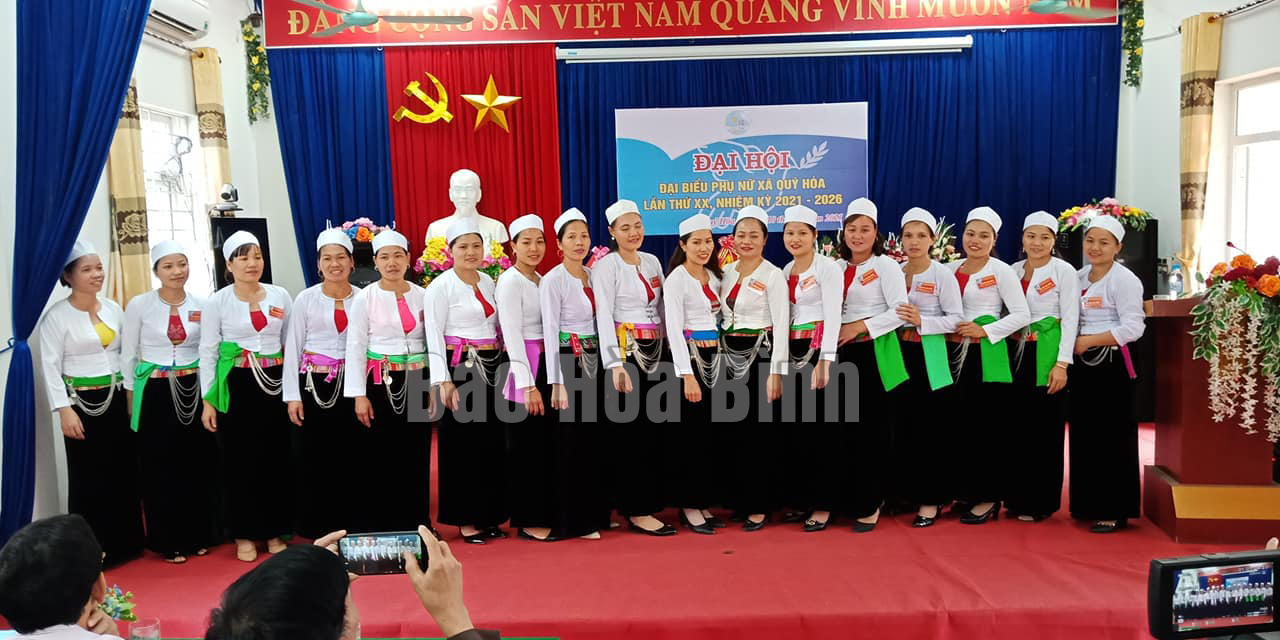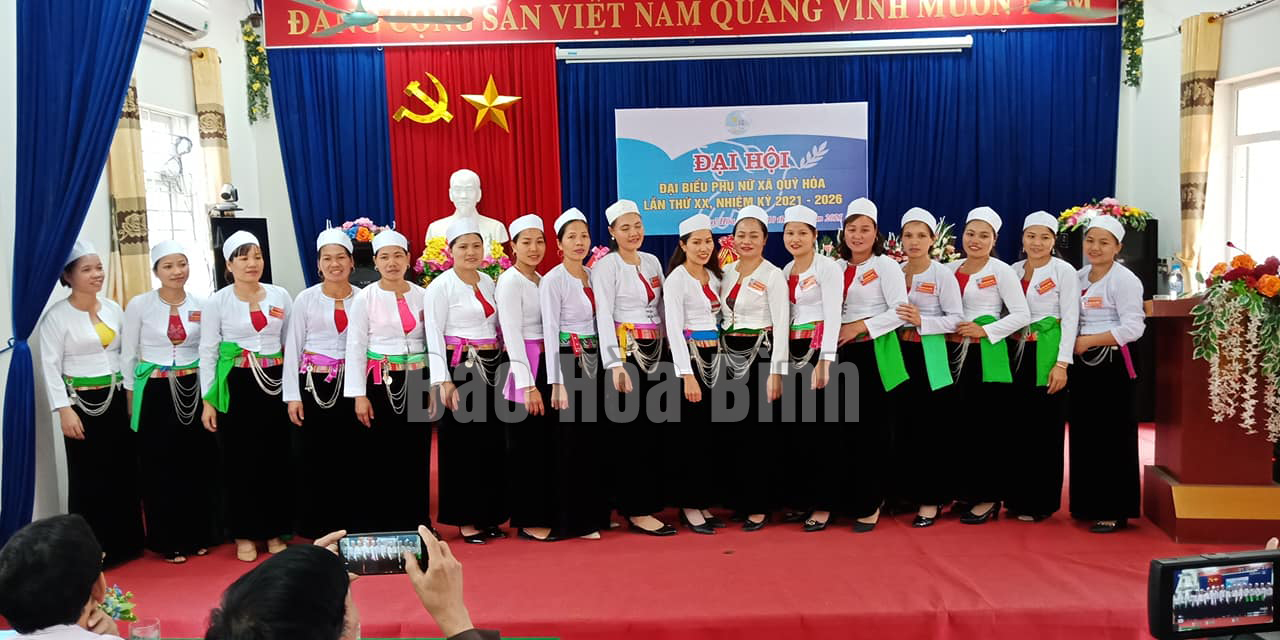
(HBO) – Quy Hoa commune in Lac Son district of Hoa Binh province is in the paddy harvesting season. In terraced fields, local residents are busy harvesting paddy.
Bui Van Dat, Chairman of the People’s Committee of Quy
Hoa commune, said over the past years, the commune’s Party Committee and
People’s Committee have instructed locals to preserve traditional culture,
adding that the work needs patience.

Local
residents in Quy Hoa commune, Lac Son district, often put on traditional dresses
during festivals or major events.
Residents in Quy Hoa have preserved traditional customs
and habits of the Muong ethnic group such as their language, traditional
costumes, gongs, stilt houses, and funeral and wedding rituals.
Quy Hoa has more than 400 gongs of different types,
which are used during the traditional Tet festival, National Day and other
major festivals.
It has maintained at least one club of "sac bua” (gong
playing) in each hamlet, even two-three clubs in some hamlets.
Weaving has also been restored in the locality, mainly
serving daily needs of locals. Weaving products are also sold to visitors.
"Khai ha” is one of the unique festivals in Quy Hoa,
which is held on the eighth day of the first lunar month to pray for favourable
weather conditions and bumper crops.
Local residents only go to work following the festival
as they believe that Gods and ancestors protect them after they receive offerings,
said Bui Van Nhiem, head of hamlet Thung 2.
Dat said Lac Son district has implemented a project
restoring traditional culture in Quy Hoa commune to serve another project on
local tourism development.
The district aims to optimise Quy Hoa’s potential and
ensure the harmony between development and the preservation of tangible and
intangible values.
Quy Hoa has planned to establish a working group that
is tasked wish restoring the traditional culture, while stepping up the
communication work to raise public awareness of the work.
The Party Committee and People’s Committee of Quy Hoa
commune have created conditions for locals to promote exchanges, helping to
raise the pride of traditions among young generations./.
With an increasingly vibrant and widespread emulation movement aimed at building cultured residential areas and cultured families, Yen Thuy District has been making steady progress toward improving both the material and spiritual well-being of its people, while fostering a civilized, prosperous, beautiful, and progressive community.
Once lacking recreational spaces and community facilities, Residential Group 2 in Quynh Lam Ward (Hoa Binh City) has recently received attention for the construction of a new, spacious, and fully equipped cultural house. The project followed the model of state support combined with public contributions in both labor and funding.
The "All people unite to build cultural life" movement, which has been effectively integrated with Kim Boi district’s socio-economic development goals, is fostering a lively spirit of emulation across local residential areas, hamlets, villages, public agencies, and enterprises. In addition, through the initiative, traditional cultural values are being preserved and promoted, while community solidarity and mutual support in poverty reduction and economic development are being strengthened.
A working delegation of the Hoa Binh provincial People’s Committee led by its Permanent Vice Chairman Nguyen Van Toan on June 11 inspected the progress of a project to build the Mo Muong Cultural Heritage Conservation Space linked to tourism services in Hop Phong commune, Cao Phong district.
Born and growing in the heroic land of Muong Dong, Dinh Thi Kieu Dung, a resident in Bo town of Kim Boi district, in her childhood was nurtured by the sweet lullabies of her grandmother and mother. These melodies deeply imprinted on her soul, becoming an inseparable part of her love for her ethnic group's culture. For over 20 years, this love for her hometown has driven Dung to research, collect, and pass down the cultural values of the Muong people to future generations.
In the final days of May, the Ethnic Art Troupe of Hoa Binh Province organized performances to serve the people in remote, mountainous, and particularly disadvantaged areas within the province. These were not just ordinary artistic shows, but they were the meaningful journeys aimed at spreading cultural values, enhancing the spiritual life of the people and contributing to the preservation of ethnic minority cultural identities.



